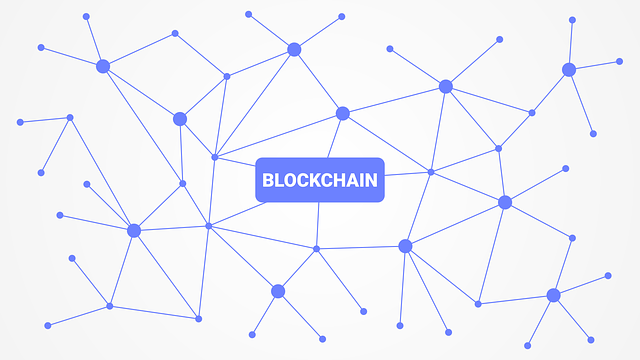Speed is important. End users expect fast and seamless access to their content. Your site will be viewed as slow by end users who will go to sites that are faster. How fast do you have to get there?
According to a 2009 study, 47% of people expect pages to load within 2 seconds. 40% of users would abandon a page if it took longer than 3 seconds to load. This study was published over eight years ago. Eight years! This is two years since the original iPhone was released. We expect more today, and we expect things on demand.
Your customers won’t wait for your website to load. Your customers won’t wait for your site to load. They have millions of other options and almost instant access to the global marketplace.
It’s not just about users. Google considers site speed when ranking websites in its search engine results pages. That’s why Content Distribution/Delivery Networks (CDNs) are becoming an integral part of smart business setup.
User expectations go beyond website speed. We expect faster transactions, better access and more privacy. There are growing concerns about data safety and availability due to the recent Dropbox hack, NSA data tapping, and Amazon Cloud failure earlier in the year.
How cloud storage works in the traditional way
Let’s suppose you use Google Drive to store all your personal cloud storage requirements. Google saves your data when you upload it to the cloud. Your computer sends a request at that data center when you need to access your data. Voila! The data centre may not be located in your area (or the location of your customer/visitor). Delivery delays are something that most people would rather avoid.
Problem(s)
The use of huge server farms presents its own challenges. They are expensive to run. They need to be kept at the right temperature, up-to-date, and maintained well. It is expensive to maintain the tech inside, so it must be replaced or refreshed on a regular basis. These datacenters can have a significant environmental impact.
Safety is another important aspect. Google and all other service providers have strict safety procedures in place. However, you must allow for human error once people are involved.
Privacy is not at risk due to human error. Google’s privacy terms provide a wide range of scenarios in which they can legally access your data and share it. Large corporations have the ability to search files that are not encrypted. Some people believe they have already done this. This is not a conspiracy theory about big data. It’s merely to point out that traditional cloud storage has vulnerabilities and that they need to be treated with more than a bandaid.
Cloud Storage Types
- Blockchain storage
- Storj
- Sia
Blockchain is hot right now, and many are searching for cost-effective, secure ways to store their growing data libraries.
A few small groups have quietly worked over the past couple of years to find alternative solutions that reduce the risk of human error and increase privacy and security.
Blockchain storage
In 2008, the blockchain was reintroduced to the public consciousness through a white paper by Satoshi Nakamoto. Bitcoin: A Peer to Peer Electronic Cash System describes a Peer to Peer network that records every transaction in a digital ledger.
Blockchain eliminates the need to trust third parties. Each transaction is recorded and timestamped. Because every node on the network has a copy of the data, it can’t be altered. The records are kept accurate by constant verification.
This makes it transparent and traceable, making it almost impossible for hackers to hack. A few companies are using blockchain to transform the way we view cloud storage.
Storj
Storj created a secure, decentralized way to store data in cloud storage without the need for server farms. Instead, they make use of the extra space on hard drives of people to store and share data all over the world.
Let’s suppose you have 250GB of spare space on your hard drive that you don’t intend to use. Storj can rent it. You can get paid for the space, or 250GB of cloud storage in exchange. How does this protect your data? All data is encrypted and shredded, then distributed across the Storj network. You are the only one who has access to your data.
This is what makes this solution different from traditional cloud storage. Storj cannot give anyone access, even if they want to, to your data because they don’t have the key or the information. A hacker cannot also access your data, even if they could decrypt one piece of it. They have no idea how it fits in your files.
You only pay for the services you use. There are no monthly contracts. The month ends with a bill for the amount you used, and the next month, you get paid for the use of others. You technically get cloud storage free of charge if you rent space out and then use the equivalent. Storj can be used for more than personal use. It also has the same professional features as Amazon S3.
The Storj network uses the Ethereum blockchain, although it is decentralized. Storj is dependent on another company to function. The tech behind Ethereum is being widely used in smart contract industry.
Sia
Sia developed a completely decentralized and secure way to store data on the cloud using blockchain without the need for server farms. They instead use peer-to-peer devices to distribute your data and store it. This reduces the cost of storage. Sia charges $10 per month for 5 TB data storage on the cloud. Amazon S3 costs $115 for the same storage. You can save even more when you factor in requests and other traffic.
Sia, like Storj uses the space that people have on their hard drives. Smart monthly contracts are used by users to rent or buy storage space. Users can specify the terms of the contract, which is then a part the record. Renters pay the renter’s value and money is kept in escrow until the contract has been honored. The landlord receives the money at the end of each month. This makes exchanges easy, secure, honest, and affordable.
Sia, unlike Storj developed their own blockchain and cryptocurrency in order to secure and maintain the Blockchain. Siacoin is an incentive for miners to verify the blockchain. It’s similar to Bitcoin for its miners.
Storage is in high demand
Sia and Storj storage solutions have great potential for disruption. They are faster, more secure, and cheaper than traditional cloud storage.
Cisco predicts that 50 Billion devices will be connected by 2020. This will mean more photos, videos, and online content (and thus require storage) than ever before.
Distributed cloud storage on blockchain is a solution to a problem that continues to grow in size. We are at the edge. Many believe that the blockchain and its potential are much like the internet in the early 1990s.




